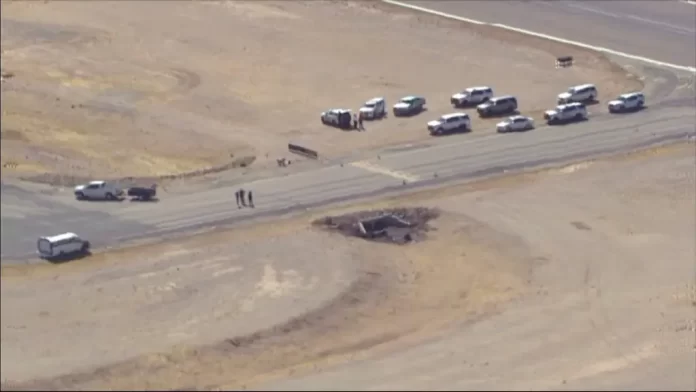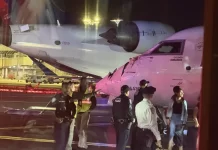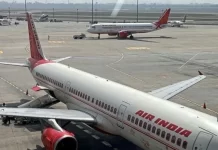At least two people were killed Wednesday morning after two small single-engine planes collided midair at Marana Regional Airport in Arizona, officials confirmed. The Federal Aviation Administration (FAA) reported that the incident occurred around 8:28 a.m. local time when a Lancair 360 MK II and a Cessna 172S collided while upwind of Runway 12.
According to preliminary information from the National Transportation Safety Board (NTSB), the Cessna managed to land safely, while the Lancair crashed near Runway 3 and caught fire upon impact.
The Marana Police Department confirmed the fatalities but did not immediately release the identities of the victims. Police also stated that emergency responders were unable to provide medical treatment due to the severity of the crash.
Marana Regional Airport, located about 21 miles northwest of Tucson, is an uncontrolled field, meaning it does not have an operating air traffic control tower. Instead, pilots communicate using a common traffic advisory frequency to announce their positions and coordinate landings and takeoffs.
Despite the lack of a control tower, pilots are required to adhere to all federal aviation regulations, including minimum visibilities, safe altitudes, and right-of-way rules. The airport features two intersecting runways and accommodates tens of thousands of flights annually. A multimillion-dollar project to construct an air traffic control tower at Marana has faced delays, primarily due to the COVID-19 pandemic.
The NTSB is leading the investigation and has dispatched an investigator to the crash site, expected to arrive Thursday morning. The FAA is also conducting an inquiry. AeroGuard, a commercial flight training school that operated the Cessna, confirmed that its two pilots were not injured in the collision. The company expressed condolences, stating, “We are deeply saddened by the two fatalities from this tragic accident, and our thoughts and prayers are with their families and loved ones during this difficult time.”
This tragedy follows a string of recent aircraft accidents in North America, including a fatal plane crash in Scottsdale, Arizona, last week, which killed one of two pilots aboard a private jet owned by Mötley Crüe singer Vince Neil, a fiery crash-landing at a Toronto airport involving a Delta jet, a midair collision in Washington, D.C., between an American Airlines passenger jet and an Army helicopter, which resulted in 67 fatalities—the deadliest U.S. air disaster since 2001, and a medical transport jet crash in Philadelphia, killing all seven people aboard and injuring 19 others when the aircraft exploded upon impact.
Aviation safety consultant Jeff Guzzetti, a former investigator with the FAA and NTSB, emphasized that uncontrolled fields like Marana Regional Airport are not inherently unsafe, provided pilots communicate properly and follow visibility and right-of-way regulations. “All pilots should be broadcasting on the common traffic advisory frequency. There’s also a responsibility to see and avoid—each pilot must ensure they don’t collide with others,” Guzzetti explained.
As investigations into the Marana crash continue, aviation authorities will be examining the circumstances that led to the collision, seeking to prevent similar tragedies in the future.
















